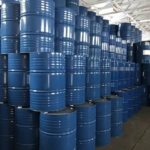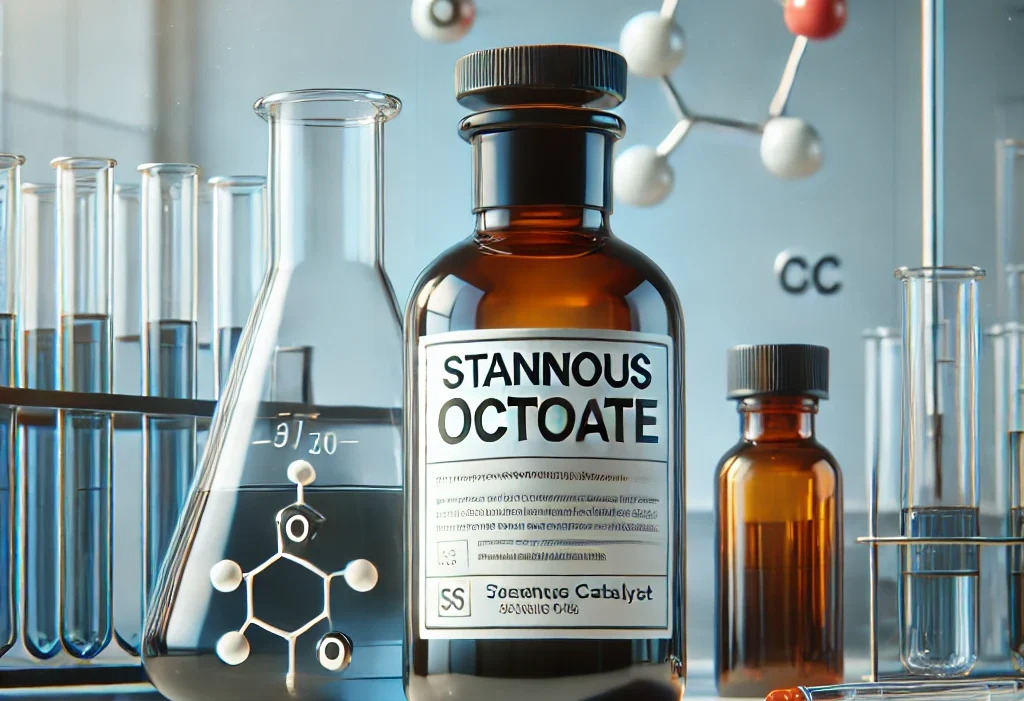Essential Catalyst for Polyurethane Production
Introduction to Stannous Octoate
Stannous octoate, also known as tin(II) 2-ethylhexanoate, is a widely used organotin compound that plays a critical role in the production of polyurethane foam. It is one of the most commonly used catalysts in polyurethane chemistry, particularly in flexible and rigid foam formulations. This catalyst is known for its ability to efficiently initiate the polymerization reaction between polyols and isocyanates, ensuring high-quality foam formation with desirable mechanical properties.
Function of Stannous Octoate in Polyurethane
In polyurethane production, catalysts are essential to control the rate of reaction between polyols and isocyanates. Stannous octoate acts as a metal-based catalyst, accelerating the gelling reaction in polyurethane formation. Unlike amine catalysts that influence both the gelling and blowing reactions, stannous octoate is primarily responsible for enhancing the polymerization (gelling) process, leading to proper cell structure and improved physical properties of the foam.
Common Applications of Stannous Octoate
Stannous octoate is used extensively in various polyurethane applications, including:
- Flexible Polyurethane Foams: Used in furniture, automotive seating, and bedding for comfort and durability.
- Rigid Polyurethane Foams: Provides structural stability and insulation properties in construction and refrigeration industries.
- Coatings, Adhesives, and Sealants: Enhances the adhesion and curing properties of polyurethane-based products.
- Elastomers: Ensures proper cross-linking for improved mechanical properties in shoe soles and industrial applications.
- Medical Applications: Used in the synthesis of biodegradable polymers for biomedical applications.
How Stannous Octoate Works in Polyurethane Chemistry
Stannous octoate primarily catalyzes the reaction between hydroxyl (-OH) groups in polyols and isocyanate (-NCO) groups. This reaction forms urethane linkages, leading to polymer growth and foam formation. The key mechanisms include:
- Acceleration of the Gelling Reaction: Stannous octoate speeds up the formation of polyurethane chains by promoting the reaction between isocyanates and polyols.
- Controlled Reaction Rate: Helps in balancing the curing process, ensuring uniform foam expansion and desired mechanical properties.
- Improved Cell Structure: Assists in achieving fine and homogeneous foam cell morphology, reducing defects and inconsistencies.
- Compatibility with Various Polyols and Isocyanates: Works well in different polyurethane formulations to optimize performance.
Use of Stannous Octoate with Amine Catalysts
While stannous octoate is effective in promoting the gelling reaction, it is often used in combination with amine catalysts, which enhance the blowing reaction by facilitating the release of carbon dioxide from water-isocyanate interactions. This combination allows formulators to precisely control foam rise time, density, and mechanical properties. Some key benefits of using stannous octoate with amine catalysts include:
- Balanced Reaction Kinetics: Ensures proper foam formation without excessive heat generation or collapse.
- Optimized Foam Performance: Enhances the mechanical and thermal properties of polyurethane products.
- Customizable Formulations: Allows manufacturers to tailor polyurethane characteristics to specific application needs.
Properties of Stannous Octoate
Stannous octoate possesses several chemical and physical properties that make it ideal for polyurethane applications:
- Chemical Formula: Sn(C8H15O2)2
- Molecular Weight: 405.05 g/mol
- Appearance: Pale yellow to amber liquid
- Solubility: Soluble in organic solvents such as toluene, xylene, and esters; insoluble in water
- Stability: Stable under normal storage conditions but sensitive to moisture and oxidation
- Toxicity: Should be handled with care, using appropriate protective equipment and ventilation
Other Industrial Uses of Stannous Octoate
Beyond polyurethane foam production, stannous octoate is utilized in various industrial applications, such as:
- Silicone Curing Catalyst: Used in the production of silicone rubbers and sealants.
- Polyester Resin Production: Acts as a catalyst in polymerization reactions for synthetic resins.
- Biodegradable Polymer Manufacturing: Plays a role in the production of polylactic acid (PLA) for eco-friendly plastics.
- Lubricant Additives: Enhances the performance of synthetic lubricants.
Why Choose Emirachem for Stannous Octoate and Other Catalysts?
At Emirachem, we specialize in providing high-quality polyurethane raw materials, including stannous octoate and amine catalysts, to ensure optimal performance in your polyurethane applications. With industry expertise, technical support, and a commitment to excellence, Emirachem is your trusted partner for reliable and sustainable polyurethane solutions.
For more information on stannous octoate and how it can enhance your polyurethane formulations, contact Emirachem today!









